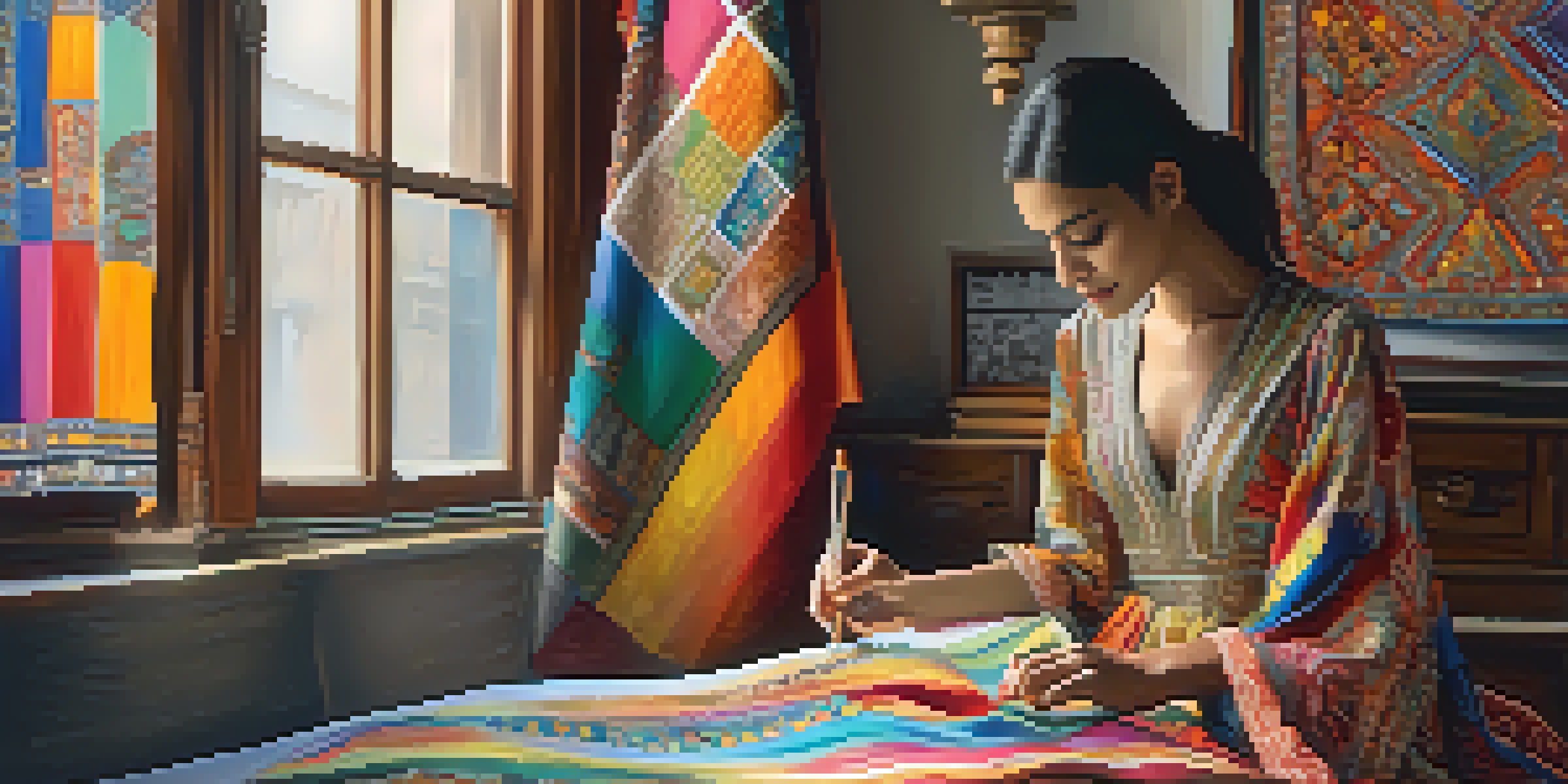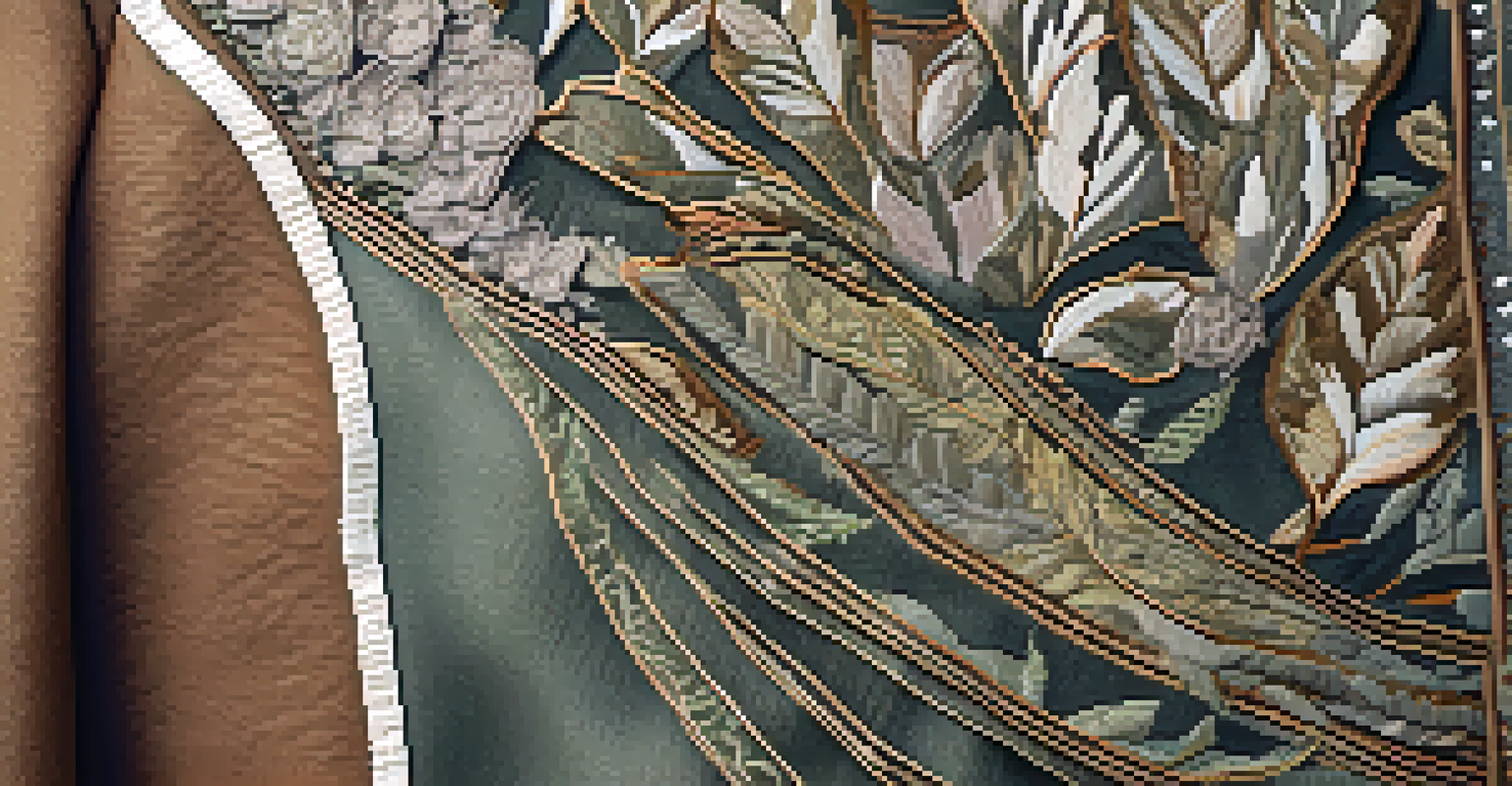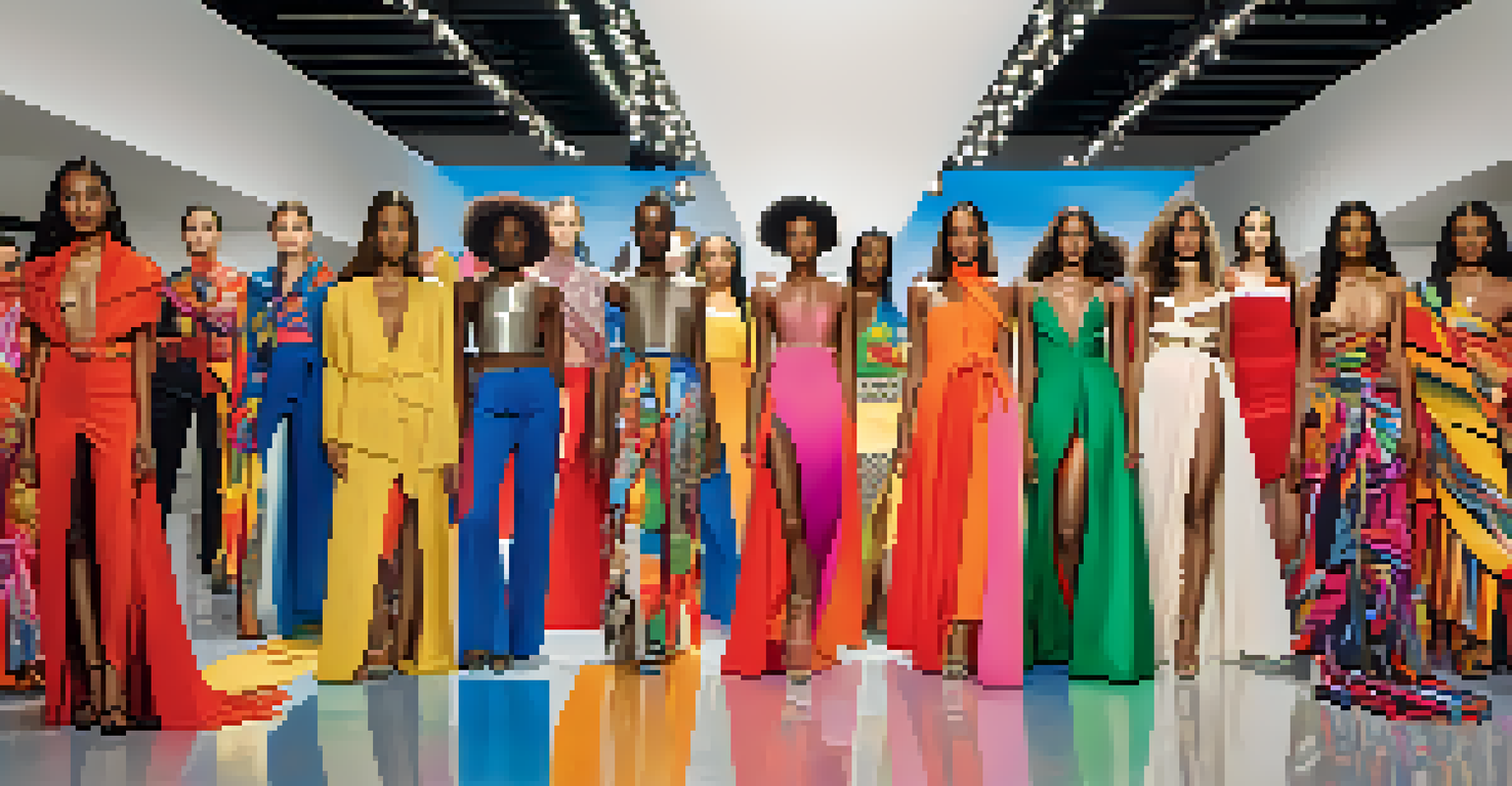Fashion Design: Weaving Personal Histories into Fabric

The Intricate Connection Between Fashion and Identity
Fashion is more than just clothing; it's a canvas for personal expression. Each piece we wear tells a story, reflecting our backgrounds, beliefs, and experiences. For many designers, their work becomes a way to communicate their unique identities to the world.
Fashion is about dreaming and making other people dream.
Consider how a vibrant dress can evoke memories of a grandmother's garden or a tailored suit might signify a significant career milestone. These elements of fashion serve as a bridge linking our past to our present. By wearing these garments, we celebrate our narratives and heritage.
Fashion designers often draw inspiration from their own histories, translating personal experiences into wearable art. This connection emphasizes how personal stories can shape the very fabric of the fashion industry, making it a rich tapestry of diverse voices.
Cultural Heritage: A Source of Inspiration
Cultural heritage plays a pivotal role in fashion design, influencing patterns, colors, and styles. Designers frequently incorporate traditional motifs and techniques, paying homage to their roots while creating contemporary pieces. This blend of old and new creates a dialogue between generations.

Take, for example, the vibrant textiles of indigenous cultures or the intricate embroidery of Eastern garments. By weaving these elements into modern designs, fashion becomes a powerful medium for storytelling, preserving history while pushing boundaries. It allows designers to share their cultural narratives with a broader audience.
Fashion Reflects Personal Histories
Fashion serves as a canvas for personal expression, allowing individuals to celebrate their unique stories and heritage through the garments they wear.
Moreover, fashion serves as a platform for cultural exchange, where designers from various backgrounds can showcase their histories. This fosters understanding and appreciation, encouraging a more inclusive fashion landscape that celebrates diversity.
Personal Experiences Shaping Design Choices
Every designer has a unique journey that shapes their creative vision. Personal experiences, whether joyous or challenging, frequently inspire collections. For instance, a designer might draw from their experiences of overcoming adversity, channeling that emotion into their work.
Style is a way to say who you are without having to speak.
This personal connection not only enriches the design process but also resonates with consumers. When individuals wear a piece that reflects a designer's journey, they feel a deeper connection to the garment. It becomes more than just a fashion statement; it embodies resilience and authenticity.
Additionally, personal stories can evoke empathy and understanding among audiences. By opening up about their backgrounds, designers invite others to share in their narratives, creating a sense of community through fashion.
The Role of Sustainability in Fashion Narratives
Sustainability has become an essential narrative in fashion design, intertwining personal and global histories. Many designers are now reflecting their values through eco-friendly practices and materials. This shift not only addresses environmental concerns but also emphasizes social responsibility.
By choosing sustainable fabrics or ethical production methods, designers weave their personal ethos into their creations. For instance, a designer committed to environmental activism may use recycled materials to create stunning pieces, telling a story of hope and renewal. This resonates with consumers who share similar values.
Cultural Heritage Inspires Design
Designers draw on their cultural backgrounds, blending traditional motifs with contemporary styles to create a rich narrative that honors their roots.
This approach to fashion encourages consumers to reflect on their own choices and the impact they have. As individuals align their purchasing decisions with their beliefs, they become part of a larger narrative advocating for change in the industry.
Fashion as a Reflection of Societal Changes
Fashion often mirrors societal shifts, serving as a barometer for cultural changes. Designers frequently respond to the world around them, creating pieces that reflect current events, movements, and sentiments. This responsiveness highlights the dynamic relationship between fashion and society.
For example, the rise of social movements has led to the emergence of fashion statements that advocate for change. Designers use their platforms to raise awareness about issues such as gender equality, body positivity, and racial justice. Through their collections, they spark conversations and inspire action.
This intertwining of fashion and activism illustrates how personal and collective histories shape the industry. By embracing these societal narratives, designers create a legacy that goes beyond aesthetics, fostering a deeper understanding of the world.
The Power of Storytelling in Fashion Marketing
Storytelling has become a crucial element in fashion marketing, enabling brands to connect with consumers on a personal level. By sharing the stories behind their designs, brands invite customers into their world, creating an emotional resonance that transcends mere transactions. This approach fosters loyalty and engagement.
Consider how brands highlight the journey of their products, from conception to creation. This transparency not only builds trust but also allows consumers to appreciate the artistry and craftsmanship involved. When people understand the narrative behind a garment, they are more likely to cherish and value it.
Sustainability Shapes Fashion Choices
A growing emphasis on sustainability in fashion reflects designers' values and encourages consumers to align their purchasing decisions with their beliefs.
Additionally, storytelling can be a powerful tool for inclusivity. By showcasing diverse narratives, brands can appeal to a broader audience, celebrating the rich tapestry of human experience. This enhances the connection between the consumer and the brand, making fashion a shared journey.
The Future of Fashion Design: Honoring Histories
As the fashion industry evolves, the importance of personal and cultural histories will continue to be paramount. Emerging designers are increasingly prioritizing authenticity, seeking to honor their backgrounds while innovating for the future. This commitment to storytelling is reshaping the landscape of fashion.
Future collections are likely to feature even more diverse perspectives, as designers draw from a plethora of influences. By weaving personal experiences into their work, they create a rich narrative that resonates with consumers seeking connection and meaning in their purchases.

In this ever-changing industry, the ability to honor history while embracing innovation will be key. As designers continue to share their stories, fashion will remain a powerful medium for expression, celebrating the beautiful interplay of personal and collective histories.